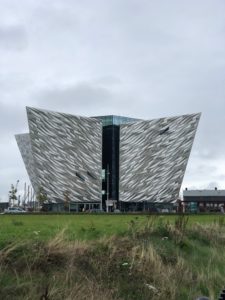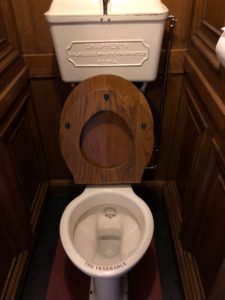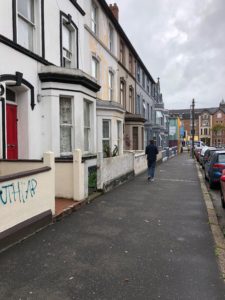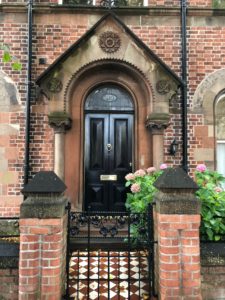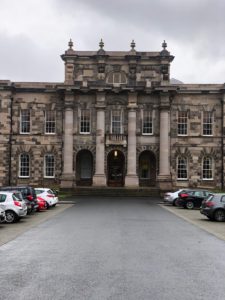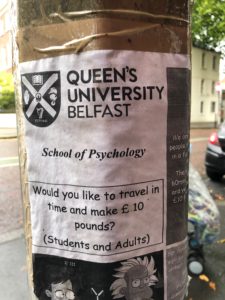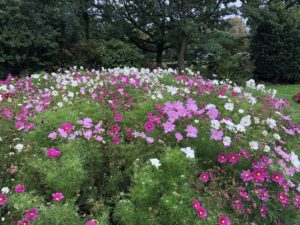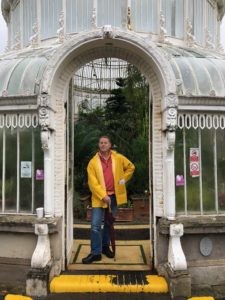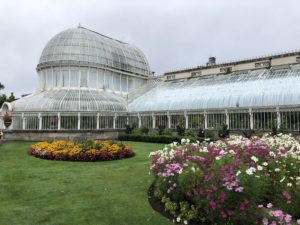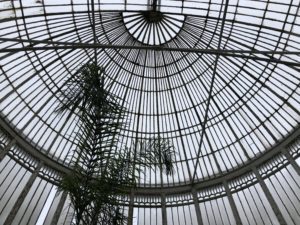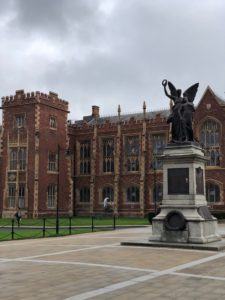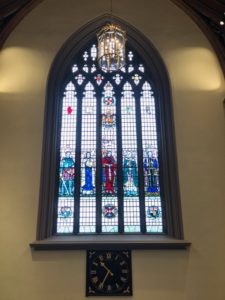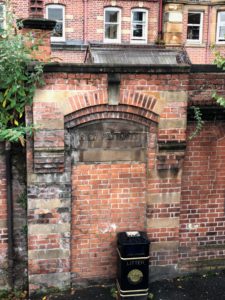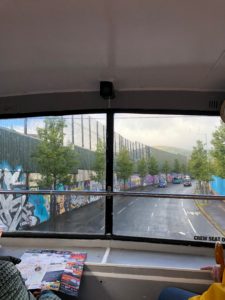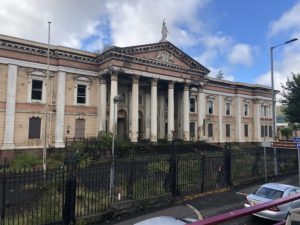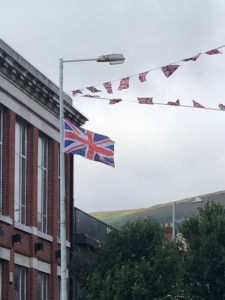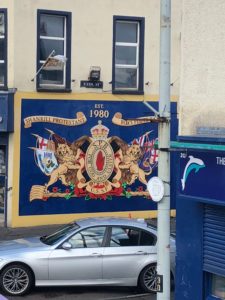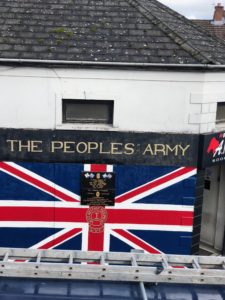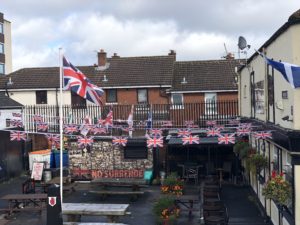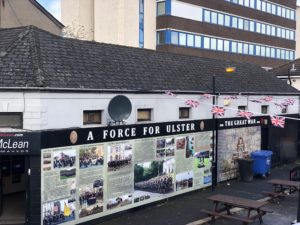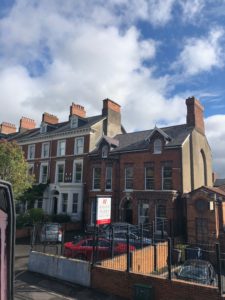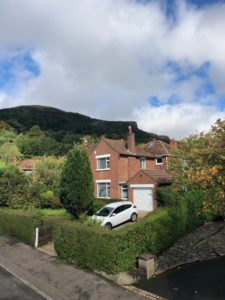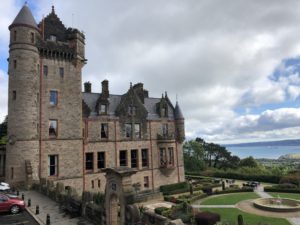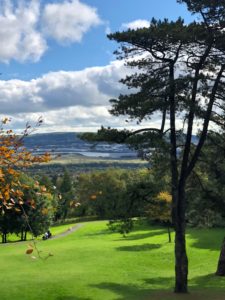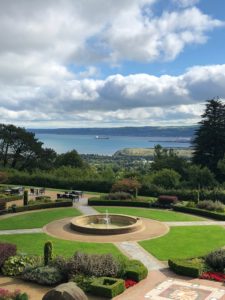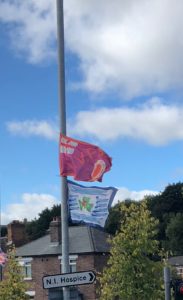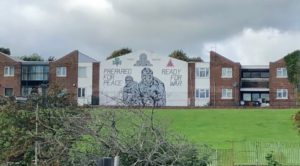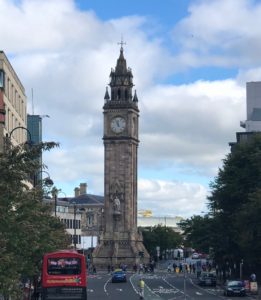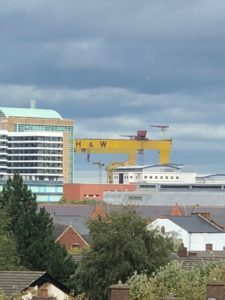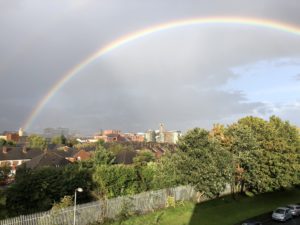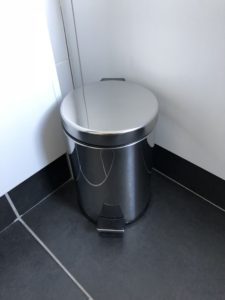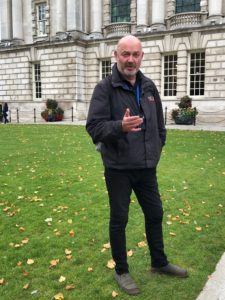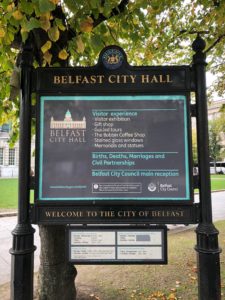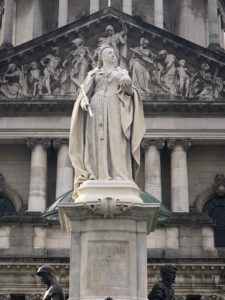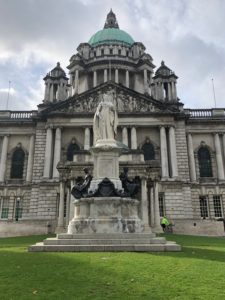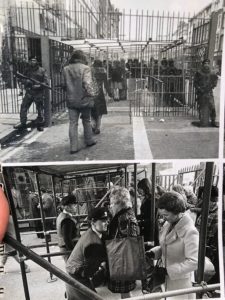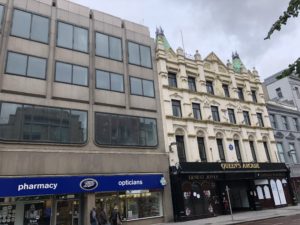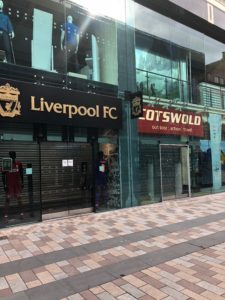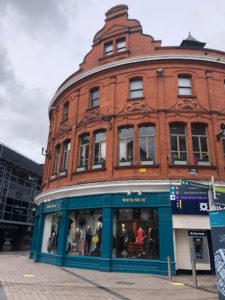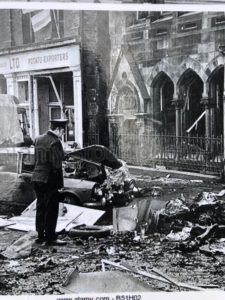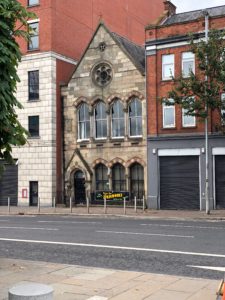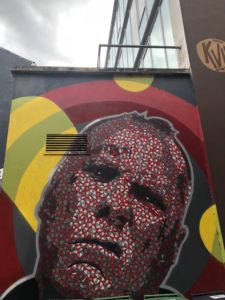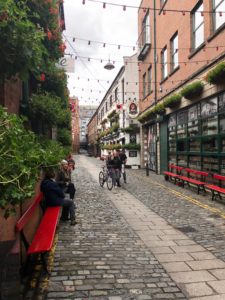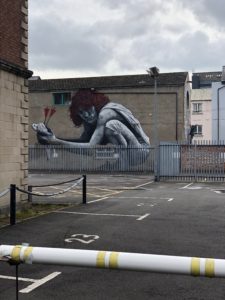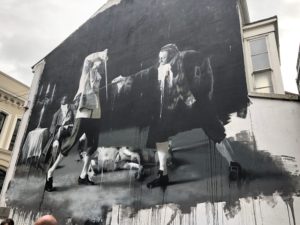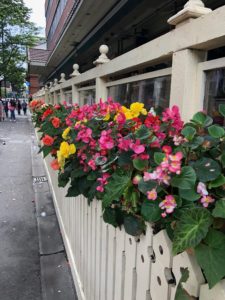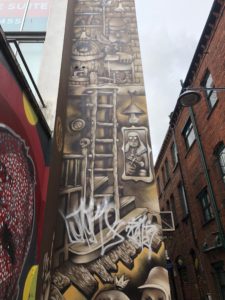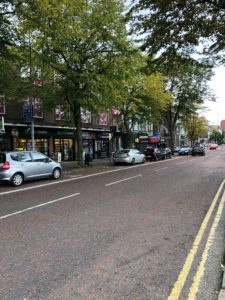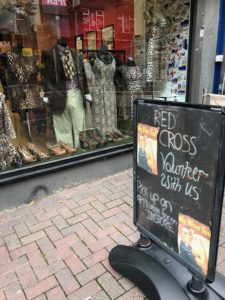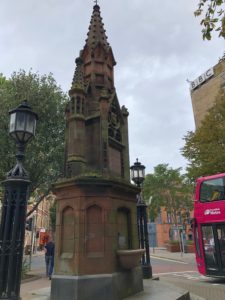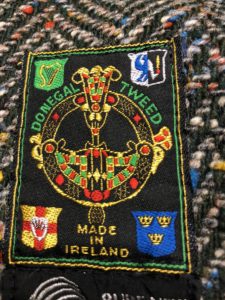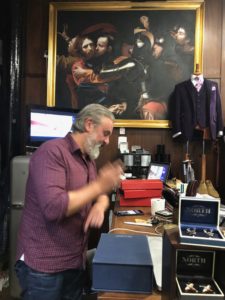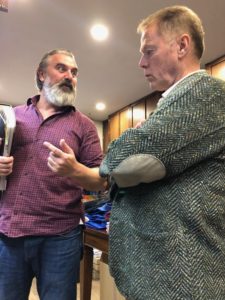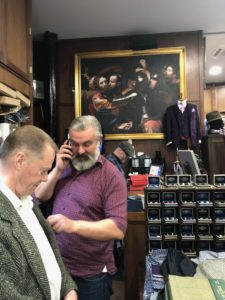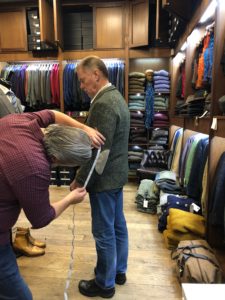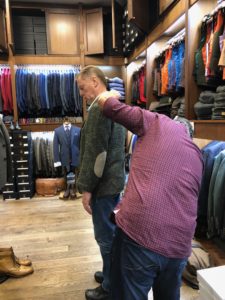Yesterday we trooped like good tourists to the Titanic Museum. I wrote a review on TripAdvisor entitled, “A Disappointment of Titanic Proportion.” I’ll just leave it at that and pop in one picture just to prove our attendance.
Oh, but one more, the venerable “Crapper” aboard the SS Nomadic, the Titanic tender ship. Click to enlarge so you can see the logo.
We have fallen in love with those “Hop On, Hop Off” buses. They give a great tour of the city and we end up seeing things we wouldn’t otherwise see, getting a sense of the city overall.
We decided to walk the few blocks from our hotel to Queen’s University and the Botanical Gardens and after trouping around there . . . hop on.
Our street – can you conjure a more definitive Belfast street scene?
The first building in our path, the handsome Union Theological College.
Ah, a new job!
Then on to the Botanical garden – more flowers.
Such a dandy chap!
The Palm House Conservatory, finished in 1840, and one of the first to feature curved glass and cast iron.
Just a few steps to the iconic university building with walls of stained glass.
Time to hop on. It was raining when we boarded so no pictures to show until we got to Royal Victoria Hospital where I guess they are not accepting new patients (click to enlarge).
As the bus zigged and zagged through the now sunny neighborhoods, the guide let us know if it was Catholic or Protestant. The city is still mightily segregated. Here is a “peace wall” which started springing up in 1969 to “minimize inter-communal violence”. This one is still standing around a Catholic neighborhood and the gates close at 6:30 every evening.
Here a slowly crumbling prison where folks were held without cause.
And on we went to Shankill Road (yesterdays post referred to the Shankill Butchers) where allegiances were proudly displayed.
Then you turn a corner and flash back into the world of Irish Ozzie and Harriet.
The Belfast Castle is nestled in the hills just outside the city centre. The gardens have a view across the river to the shipyard.
Another turn, another declaration. This claims territory for the Ulster Volunteer Force.
The fragile peace is palpable.
For the sake of history, here is the Albert clock. Vickie built memorials all over the empire in an effort to impress upon everyone how sad she was to lose her German husband. I’m not a bad photographer, the clock tower leans. Never one to be told no, Vickie had the thing built over a submerged river.
Back to the hotel and a view out our window of the mammoth H & W cranes next to the Titanic dock.
It just started raining while the sun is shining . . . pot of gold?
Since we are getting to the end of the trip, we can safely add a tip for hoteliers around the globe. THESE THINGS DON’T WORK. You step on the pedal and it hits you on the shin!
